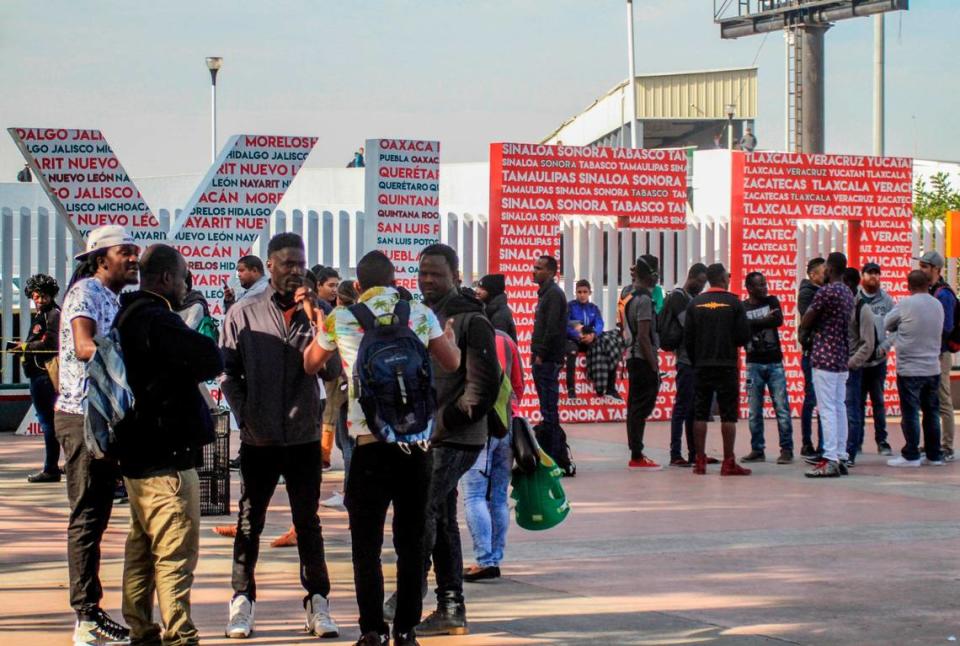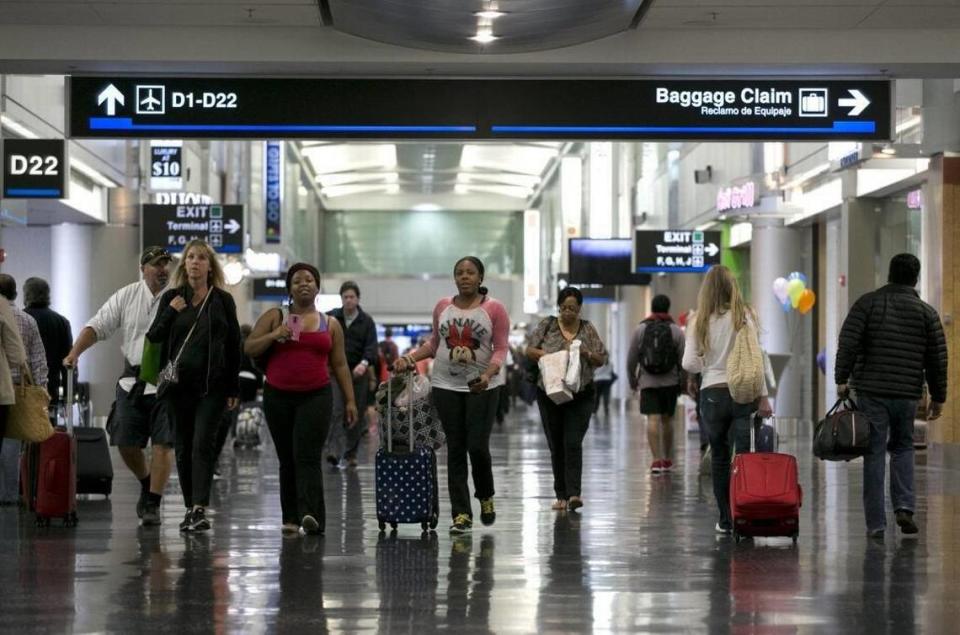What happens once migrants cross the U.S. border seeking asylum? It’s complicated
Asylum is a form of protection to stay legally in U.S. territory.
A migrant can apply for asylum in the United States if they are physically in the country or at a port of entry at Customs and Border Protection. Once the migrant crosses the border, the asylum process is long and complicated, and can take an average of almost five years to complete.
All asylum seekers, and any family members waiting to join them, are left in legal limbo while their cases are pending.
Here is what you need to know about the process:
Choose one of the three types of asylum
▪ Affirmative Asylum is granted to immigrants who are not subject to removal or deportation proceedings, who entered legally with a visa, and who are already in the country. It is also for a migrant who has been designated as an “unaccompanied minor,” even if the person is in deportation proceedings.
When an asylum seeker enters the U.S. through a port of entry or without inspection, the person must usually file an asylum application through the defensive or expedited asylum processes.
▪ Defensive Asylum is granted to immigrants without legal status who have been detained as unauthorized immigrants or caught trying to cross the border illegally and are in standard deportation proceedings with the Executive Office for Immigration Review (EOIR) of the Department of Justice (DOJ).
This type of asylum is requested as a defense against removal after the affirmative asylum request has been rejected. The case is solved in an immigration court before an EOIR judge, who does not provide an attorney. The court’s decision can be appealed.
▪ Expedited Asylum is granted to a person detained within 14 days after entering the US who is facing “expedited deportation” proceedings so that an officer reviews the case and adjudicates his or her asylum application before the formal removal proceedings.
How to apply for asylum
▪ Submit the asylum application to the United States Citizenship and Immigration Services (USCIS) through Form I-589, along with the corresponding documentation.
▪ Immigration law requires petitioners to apply for asylum within one year of entering the U.S. There are exceptions related to delay due to extraordinary circumstances or changes in circumstances that affect the case.
▪ During the affirmative asylum interview, a USCIS officer determines if the applicant meets the definition of a refugee, a person who is out of his or her country who is unable or unwilling to return there because the person fears serious personal harm.
▪ This request may be approved, denied, or sent to court for further review. If denied, it can be appealed before the Board of Immigration Appeals and, in some cases, before federal court.
▪ If the USCIS asylum officer does not grant the affirmative asylum application and the applicant does not have legal immigration status, the applicant is referred to the Immigration Court to enter deportation proceedings, where he or she can renew the asylum application through the defensive process and appear before an immigration judge.
▪ USCIS reminds that applicants must notify any change of address after the receipt notice.
▪ Receive notification for biometric tests at the Department of Homeland Security (DHS) to check criminal background.

Credible fear interview
Migrants in expedited deportation proceedings who have told a Customs and Border Protection (CBP) officer that they fear persecution or torture if they return to their country or wish to apply for asylum are required to pass a credible fear screening interview conducted by an asylum officer. Then it all depends on whether they apply through the old process used before 2022 or the new expedited asylum procedure used after 2022, which is only used on a pilot and limited basis.
Under the new system, some asylum cases are assigned to federal officials rather than going through the court system, i.e., the asylum judge, to speed up the application process.
▪ If an asylum seeker passes the credible fear interview, and the old procedure is applied, the case will be referred to the immigration court to continue the defensive asylum application process.
▪ If an asylum seeker gets the new procedure in the expedited asylum process, the case goes back to USCIS for a separate “asylum merits interview.”
▪ At this “asylum merits” interview, which takes place within 21 to 45 days of the “credible fear” interview, the asylum officer will determine whether or not to grant asylum to the petitioner.
▪ If asylum is granted after the asylum merits interview, the process is complete.
▪ If the asylum officer determines after the asylum merits interview that a migrant does not qualify for asylum, the migrant is referred to the immigration court to proceed with the faster, defensive asylum application process designed to complete the judicial process within six months.
▪ If the officer determines that the migrant does not have a credible fear, the migrant’s removal is ordered. In this case, the decision can be appealed, following a review process before an immigration judge, who can revoke the negative opinion about credible fear so that the immigrant initiates another deportation process to seek protection from deportation, including asylum.

Reasonable fear interview
▪ Migrants who illegally reenter the U.S. after a prior order of removal and non-citizens convicted of certain crimes are subject to a different expedited deportation process called reinstatement of removal.
▪ To protect asylum seekers from deportation before filing their application, they have a “reasonable fear” interview with an asylum officer to demonstrate that there is a “reasonable possibility” of being tortured in the country of removal or persecuted for reasons of race, religion, nationality, political opinion or belonging to a particular country or social group.
